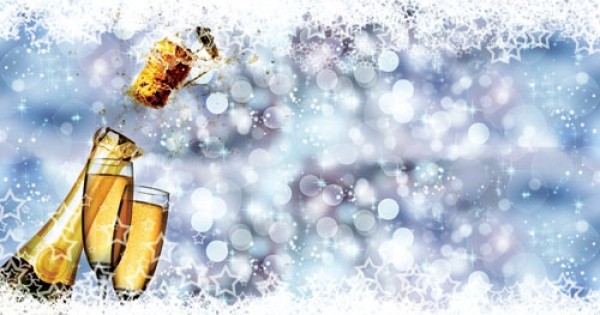New Year's Eve 2014: The Bubble Bureau
Getting the skinny on NYE's favorite beverage
By Ted Scheffler @critic1For many people, sparkling wine is something rarely partaken of—usually just at weddings and on New Year’s Eve. For others, myself included, bubbly is a beverage jones to indulge often. Champagne and other sparkling wines pair with a wide range of foods, so you ought not to think of bubbly solely as a special-occasion libation. However, if you are pouring sparkling wine on New Year’s Eve—as I will be doing—it pays to know a little about the various styles and types of bottled bubbles that are at your disposal.
Champagne
This is the big daddy of sparkling wines. Technically, only the sparkling wine made in the Champagne region of France is supposed to be called Champagne. Bubbly from other parts of France is Cremant. Champagne is typically made from three grapes—Pinot Noir, Chardonnay and Pinot Meunier—and generally runs the gamut from brut (very dry and austere) to demi-sec (with noticeable sugar). A lot of folks make the mistake of buying brut Champagne for weddings and New Year’s Eve toasts when, in fact, many of their guests would prefer a sweeter, more quaffable sparkler like demi-sec or extra-dry—which, despite the name, is actually slightly sweet. Be forewarned: Real Champagne is pricey, starting at around $50 for non-vintage Champagne. For a classic brut Champagne, I often turn to Moet Imperial ($47.99), and for something sweeter, to Veuve Clicquot Demi-Sec ($29/375ml).
Italian Sparklers
Prosecco, made from Prosecco grapes, is more fizzy than bubbly, and is Italy’s most popular sparkling wine. It’s easy to love—and also easy on the wallet; you can find great Prosecco for under $20. Dependable producers include Zardetto, Ruffino, Adami, Zonin, La Marca, Mionetto and Bisol. For Champagne-style bubbly at non-Champagne prices, I also highly recommend the Northern Italy Trento DOC wines from Ferrari winery. These are complex, soundly made sparklers that I suspect would fare well in blind tastings versus Champagne. Look especially for Ferrari Brut ($28.99), Ferrari Rosé ($37) and the particularly elegant Ferrari Perlé ($35). Finally, semi-sweet Asti Italian wines are fun and festive. Lately, I’ve really enjoyed the very affordable Ruffino Moscato d’Asti ($12.99).
Domestic Bubbly
There are oodles of American sparkling-wine producers that make their bubbly in the traditional French méthode Champenoise style, but usually at a fraction of the cost of the real stuff. Domaine Chandon celebrates its 40th anniversary this year, and I’d strongly recommend the Etoile Rosé ($30), the festive, large-format Blanc de Noirs ($36.99/1500ml) and Chandon Brut ($19.99). My other favorite American sparkling-wine producers include Gloria Ferrer, Soter, Gruet, Schramsberg, Mumm Napa, Iron Horse and Roederer Estate. You can’t go wrong with any of them—on New Year’s Eve or otherwise.
Spanish Cava
Spanish sparkling wines produced in the Champenoise traditionale method are called Cavas, and most come from Catalonia. Cava is generally a very good value, and there are certain Cavas—such as Marques de Gelida Brut ($16.99)—that could pass for French bubbly in a blind tasting. Other Cavas I enjoy include the always-dependable Freixenet Cordon Negro Extra Dry ($18.99), Segura Viudas Reserva Heredad with its distinctive bottle ($17.99), and the wonderfully complex Raventós i Blanc L’Hereu ($19.98).
Those are the major sparkling-wine types. For the adventurous, you might want to toast the new year with something unique, like Schloss Biebrich Sekt ($10) from Germany, Australia’s Jumping Grape Sparkling Red ($14)—made with Shiraz and Cabernet—or Italy’s sensuous Banfi Rosa Brachetto ($22.48).
More by Ted Scheffler
-
Flavor on the Western Front
Nomad Eatery ups the ante for off-airport eats.
- Dec 13, 2017
-
Under the Christmas Tree
Holiday gifts for cooks, foodies and winos
- Dec 6, 2017
-
Spreading the Love
Amour Café creates simple yet scrumptious fare.
- Nov 29, 2017
- More »
Latest in Cover Story
Readers also liked…
-
Forget the family pedigree—Robert F. Kennedy Jr should not be the next president of the United States
Trojan Horse
- Jun 21, 2023
-
Women decry harassment and toxic culture at St. George auto dealership
Men at Work
- Oct 11, 2023





